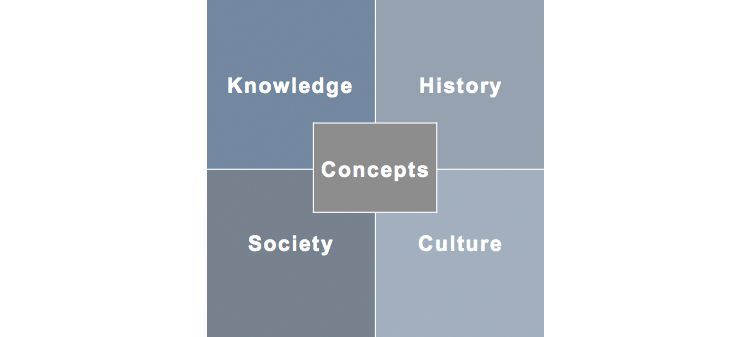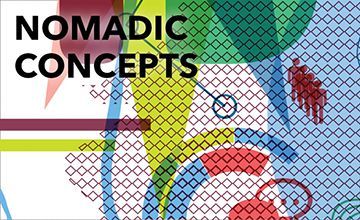Nomadic concepts
A heuristic tool for exchanging understandings of concepts across disciplinary, professional and cultural boundaries.
Rossini M 2020. Nomadic concepts. td-net toolbox profile (13). Swiss Academies of Arts and Sciences: td-net toolbox for co-producing knowledge. www.transdisciplinarity.ch/toolbox. doi.org/10.5281/zenodo.3717144
| What is the nomadic concepts tool? | Nomadic concepts – also and perhaps better known as "travelling concepts" – are a heuristic tool and analytical practice for communicating across disciplinary, professional and cultural boundaries through discussing and opposing different understandings and uses of concepts such as identity, space or emotion. It could thus also be called a translation tool. Later, it was Dutch narratologist Mieke Bal who in her book Travelling Concepts in the Humanities: A Rough Guide (2002) described and indeed demonstrated how working with (and on) concepts in the humanities enables a thoroughly interdisciplinary and intersubjective approach. |

| Why should it be applied? | The nomadic concepts tool fosters a critical awareness about the potential and limits of a researcher’s disciplinary perspective and theorising. It sharpens her/his conceptual framework, allowing for both disciplinary and interdisciplinary rigour and quality. Understood as ‘mini-theories’ and semantic units in flux, such concepts facilitate exchange, mutual learning and co-development of novel questions and projects both across disciplines and involving non-academic knowledge production. Following the understanding of concepts as having no fixed foundations but moving through various territories where they connect to diverse empirical contents and problems – as suggested by French philosopher Gilles Deleuze and psychoanalyst Félix Guattari (1991) –, this methodological practice is also a tool for (co-)creating new concepts. This leads not only to the production of basic knowledge (what a concept means in different disciplines) but to truly inter- and even transdisciplinary transformative knowledge (what a concept does and provokes in different disciplines or contexts), insofar as it leads to new understandings of phenomena and organises power relations in new ways. |
| When should it be applied? | At the very beginning of an inter- or transdisciplinary encounter or group process and recursively throughout a research project, be it an individual (PhD thesis) or a larger one. It also lends itself as a focus for conferences, see for example The annual meetings of the European Society for Literature, Science and the Arts which is usually centered around a concept, such as Empathy (Basel 2017) or the Anthropocene (Katowice 2020). |
| How does it work? | The following description is based on how the tool was put into practice at the Graduate School of the Humanities and the Social Sciences (link):
|
| How are thought styles bridged? | The concepts themselves provide the bridge: they have specific meanings and uses within each thought collective. Each participant carries the knowledge from other disciplinary, professional or cultural collectives back to her/his field where it may effect a change in the way a problem is perceived and analysed. |
| What’s the output/outcome? | A broader conceptual apparatus for the framing of a problem and the production of more complex knowledge about it. |
| Who participates in what role? | The method encourages “symmetrical learning” (Lepenies 2010) from and with each other; i.e. mutual learning across hierarchies: Each participant is an expert in her/his field who brings disciplinary knowledge to the table and also does the integration of the ‘alien’ knowledge her/himself. |
| What do I need to prepare? | The facilitator needs to (1) identify one or several concepts that is of more or less equal importance to the participants; (2) coordinate the working group tasks, and (3) organise a room for the presentation(s) and workshop(s). Participants need to read the suggested texts and prepare a presentation on the selected concept in relation to their work. |
| When not to use the method? | The nomadic concepts tool was originally designed for a heterogeneous group of researchers. Researchers from the social sciences and the humanities are familiar with deliberating abstract concepts, other societal stakeholders might be less so. |


